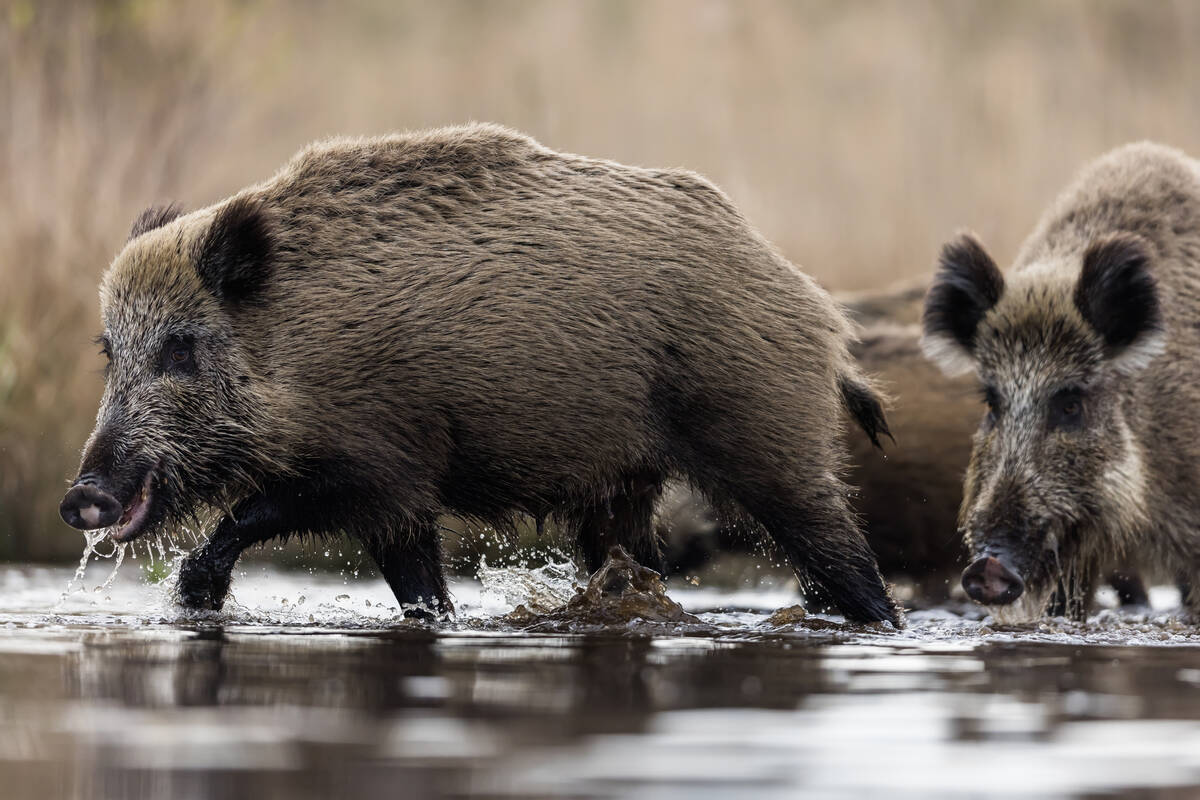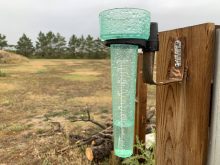Trail cameras are being considered on Highway 5 in British Columbia’s remote central interior at vehicle pull-outs and rest stops.
It’s part of an effort by RCMP and provincial conservation authorities to crack down on truckers purposely dumping grain along the road, which is unlawful but also potentially dangerous for wildlife and for other drivers.
Since March there have been four separate incidents where 400 to 700 pounds of oats have been dumped out of super Bs, although one discarded pile of grain in the Valemount area weighed more than a ton.
Read Also

Manitoba bans wild boar possession
Manitoba has tightened the regulatory status of Eurasian wild boar in an effort to help fight back against invasive wild pigs.
Reports by the media about the issue in April of last year played a key role in stopping the occurrences until recently, said RCMP Const. Michelle Hall of Central Interior Traffic Services in Clearwater, B.C., who has been patrolling the four-lane stretch of blacktop between Barriere and Blue River for 16 years.
However, outside of the past year’s respite, Hall said the incidences of dumped grain have been increasing for six years.
Highway 5 is a major supply route that connects Edmonton to the lower mainland, used for commercial and private transportation.
Hall thinks southbound truckers are self-weighing their loads of grain during the night at unmanned weigh scales and finding a convenient place to lessen their load when they realize their actual weight.
Under the Wildlife Act, fines vary up to $1, 000 for feeding animals and also disposing of waste. Dumping grain on the highway is considered littering, and fines can go up to $2,000 and six months in jail.
Springtime and spilled grain are potentially a lethal combination on the highway, said Warren Chayer, a conservation officer with the Thompson Fraser Zone based in Clearwater.
Fresh and fermenting grain attracts wildlife, particularly bears that are coming out of hibernation and hungry.
“Certainly with the grain being there it’s going to hold them because it’s a pretty big food source,” he said.
Added Hall: “They’ll gorge themselves on it, especially this time of year. It swells up in their belly and kills them.”
Numerous safety issues are also created as the bears become habituated to humans.
“People want to take pictures with them. These aren’t cuddly Walt Disney animals here. These are wild bears and they’re protecting that grain,” said Hall.
Bears and deer crossing the four-lane blacktop near rest stops also pose another serious problem for them and humans.
“They get scared with trucks and cars going past and go out on the highway and boom. Now I’ve got a serious motor vehicle incident,” she said.
“A trucker hits a bear — that’s an immovable furry object. That truck is down. There is damage. A car hitting a bear — that’s just a furry brick wall. You are now eating meat from that bear because it’ll come through your window.”
Hall said it’s not fair to farmers, who ultimately pay the price financially for “unprofessional” transportation services of their grain.
“It has to be really overweight before CVSE (commercial vehicle safety enforcement) gives the trucker a ticket for an overweight — like you’re looking at over 1,000 pounds and that’s a lot of grain. That’s a lot of grain that farmers have now lost. He’s grown it and he’s lost that money.”
















